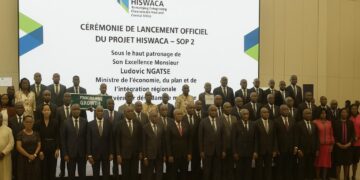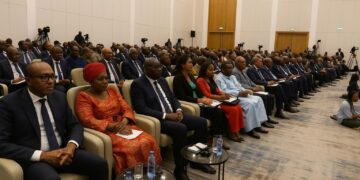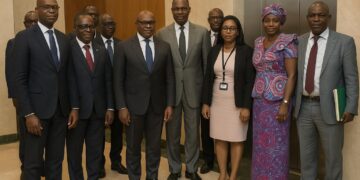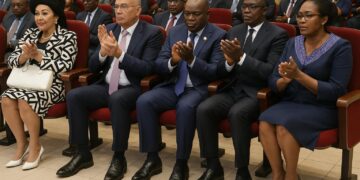Surprise policy shift stuns business community
Executives gathered at the Ministry of Finance auditorium expected routine budget hints. Instead, Minister Christian Yoka revealed the deletion of the Personal Income Tax, IRPP, calling it a “major reform” within the 2026 draft finance bill, catching many private-sector representatives visibly off guard.
Yoka framed the move as a decisive step toward a leaner fiscal framework. He argued that fragmenting the broad IRPP into specialised levies will sharpen compliance oversight, broaden the taxable universe and reinforce what he termed a “new culture of civic contribution” essential for budget credibility.
From unified IRPP to four specialised taxes
Beginning 1 January 2026, income earned in Congo-Brazzaville will be assessed through four distinct instruments: Tax on Wages and Salaries, Tax on Property Income, Tax on Capital Gains and Dividends, and a standalone Business Profit Tax. The structure revives a model that existed before the IRPP’s consolidation era.
Each tax will operate on its own schedule and rate grid. Household circumstances, marital status or the former concept of tax shares disappear entirely. The administration views this break with family-based assessment as a route to greater transparency and easier verification.
Rationale: widen base, lower rates, lift revenue
The finance ministry projects a 17 % jump in fiscal receipts during the first full year of application, even with marginally reduced headline rates. Officials insist that meticulous segmentation will curb loopholes historically linked to aggregated declarations and, in turn, permit lower statutory rates without undermining collections.
To preserve overall balance, public spending growth is capped at 3 %. Yoka underlined that strict expenditure discipline complements the revenue drive, helping contain debt ratios and sustain investor confidence in the regional securities market where Brazzaville frequently issues paper.
Corporate concerns surface during dialogue
Employer federations welcomed the clarity on headline objectives but voiced anxiety over day-to-day execution. Business leaders urged that audit campaigns be risk-based rather than influenced by short-term Treasury pressures, arguing that predictable oversight is fundamental for capital budgeting.
Several CEOs requested reductions in excise duties on sugary drinks and tobacco to protect domestic manufacturing margins. They also asked for exemptions for health-related goods such as nutritional supplements, contending that the public-health rationale outweighs potential revenue losses.
Digitalisation seen as the reform’s catalyst
Executives and ministry technicians converged on one area of consensus: digital workflows are essential. Rapid deployment of e-filing portals and e-payment gateways was portrayed as the quickest path to curbing compliance costs and limiting unofficial negotiations that have occasionally tarnished fiscal relations.
Yoka confirmed that a pilot of online declaration modules is already live for large taxpayers and will cascade to small and medium-sized enterprises before the end of next year. He framed the toolset as “the invisible auditor”, working around the clock and producing granular risk profiles.
Macroeconomic context underlines urgency
Commodity earnings, while still dominant, have proven volatile. The IMF’s latest Article IV consultation highlighted exposure to crude price swings. Against that backdrop, widening non-oil revenue is becoming a policy imperative, and the present overhaul is positioned as a cornerstone of that diversification strategy.
Domestic debt has also climbed, partly to finance pandemic-era stimulus. Containing interest costs requires a sturdier revenue base. By aligning tax yields with consumption and asset returns, officials hope to stabilise cash flow and sustain social-sector allocations without resorting to additional borrowing.
Equity questions and social optics
Removing family-based deductions invariably shifts liabilities across income brackets. Ministry economists argue that differentiated tax schedules, coupled with progressive rates inside each levy, will continue to reflect ability-to-pay principles. Advocacy groups, while acknowledging the logic, have asked for impact assessments over the transition period.
The government has signalled openness to transitional relief measures should simulations reveal undue strain on low-income employees. However, officials maintain that the overarching goal is neutrality rather than redistribution, asserting that a simpler, more predictable architecture benefits all taxpayers in the long run.
Technical roadmap toward 2026 enactment
A dedicated task force is drafting subsidiary regulations, including rate tables, filing calendars and withholding protocols. Consultations with payroll software providers are under way to guarantee that new codes integrate smoothly with existing enterprise resource systems well ahead of the switch-over date.
In Parliament, the draft finance bill is scheduled for first reading next quarter. Early indications suggest favourable reception across party lines, given the emphasis on administrative efficiency. Legislators are expected to scrutinise safeguards that prevent double taxation during the overlap period in 2025.
Comparative regional perspective
Several CEMAC peers maintain dual or triple income-tax arrangements rather than a single omnibus levy. Brazzaville’s reform thus aligns the republic with practices observed in Cameroon and Gabon, potentially streamlining cross-border tax planning for regional conglomerates.
Analysts note that harmonisation could also facilitate cooperative audits and information exchange within the monetary union, supporting the broader agenda of the regional central bank to strengthen domestic resource mobilisation.
Budget arithmetic and investor sentiment
With revenue forecast to rise and spending growth restrained, the primary fiscal balance is projected to improve. Ratings agencies will likely monitor execution capacity, but early feedback from local bond desks points to cautious optimism that tighter collections will lower rollover risk.
For private investors evaluating greenfield projects, a clearer framework around labour, property and dividend taxation allows sharper modelling of after-tax returns. The segmentation may also encourage households to diversify savings, given separate treatment of financial profits.
Data needs and transparency commitments
The ministry plans quarterly dashboards tracking collections under each new heading. Aggregated figures will be published alongside sectoral breakdowns to help analysts gauge behavioural responses.
Civil-society observers have welcomed the pledge, recalling that timely disclosure was pivotal during previous customs-duty reforms. Yoka assured delegates that technology platforms will auto-generate most of the datasets, minimising manual intervention and errors.
Potential challenges on the horizon
Legacy disputes under the outgoing IRPP regime must still be settled, requiring dual capacity within the tax authority for at least two years. Staffing, training and funding for this overlap phase constitute operational headaches that officials acknowledge but say are manageable.
Another risk involves taxpayer education. Moving from a holistic to a segmented declaration culture demands extensive outreach. Workshops, media campaigns and industry toolkits are being designed to prevent misfiling penalties that could erode early goodwill toward the reform.
Stakeholder watchpoints before year-end
Companies are mapping cash-flow implications, especially where staff remuneration packages blend salary and non-wage benefits that will now fall under different headings. Lawyers are redrafting employment contracts to reflect net-of-tax scenarios under the forthcoming schedules.
Individual landlords, suddenly subject to a dedicated property-income levy, are seeking clarification on deductible expenses. Finance officials indicated that repairs and maintenance will remain allowable, but final thresholds await the implementing decree.
Long-term vision: credibility and competitiveness
Policy planners view the reform as more than an administrative tweak; it is a signal that Brazzaville can modernise without disruption. By mirroring international best practice while safeguarding fiscal stability, the government hopes to reinforce its standing with multilateral partners and the diaspora business community.
Minister Yoka summed up the ambition in terse terms: “Simplicity breeds confidence; confidence fuels growth.” His audience, initially startled, offered restrained applause—a sign that scepticism persists but dialogue channels remain open.
Key metrics to monitor after rollout
Analysts will track effective tax yields, compliance rates, and average audit cycle time as leading indicators of reform success. Debt-service as a share of revenue will also provide a real-time barometer of whether the projected 17 % gain materialises.
Should the numbers hold, officials contend, Congo-Brazzaville could gain fiscal space for infrastructure and social spending without resorting to new levies, reinforcing the virtuous circle of trust that the overhaul seeks to establish.
Outlook for 2026 and beyond
While implementation hurdles remain, the legislative timetable appears on track. Business associations are expected to deliver final technical comments within weeks, keeping the consultation spirit alive.
If the digital backbone and risk-based audit model operate as planned, 2026 could mark the inaugural year of a leaner, more transparent revenue system, positioning Brazzaville as a regional reference point in tax modernisation.
Final reflections
The shift from the one-size-fits-all IRPP to four specialised taxes represents a calculated gamble on administrative simplicity and broader compliance. Investors will weigh the clarity gained against any transitional friction, but the strategic intent is unambiguous: fortify public finances while nurturing a business climate geared for sustained growth.












































